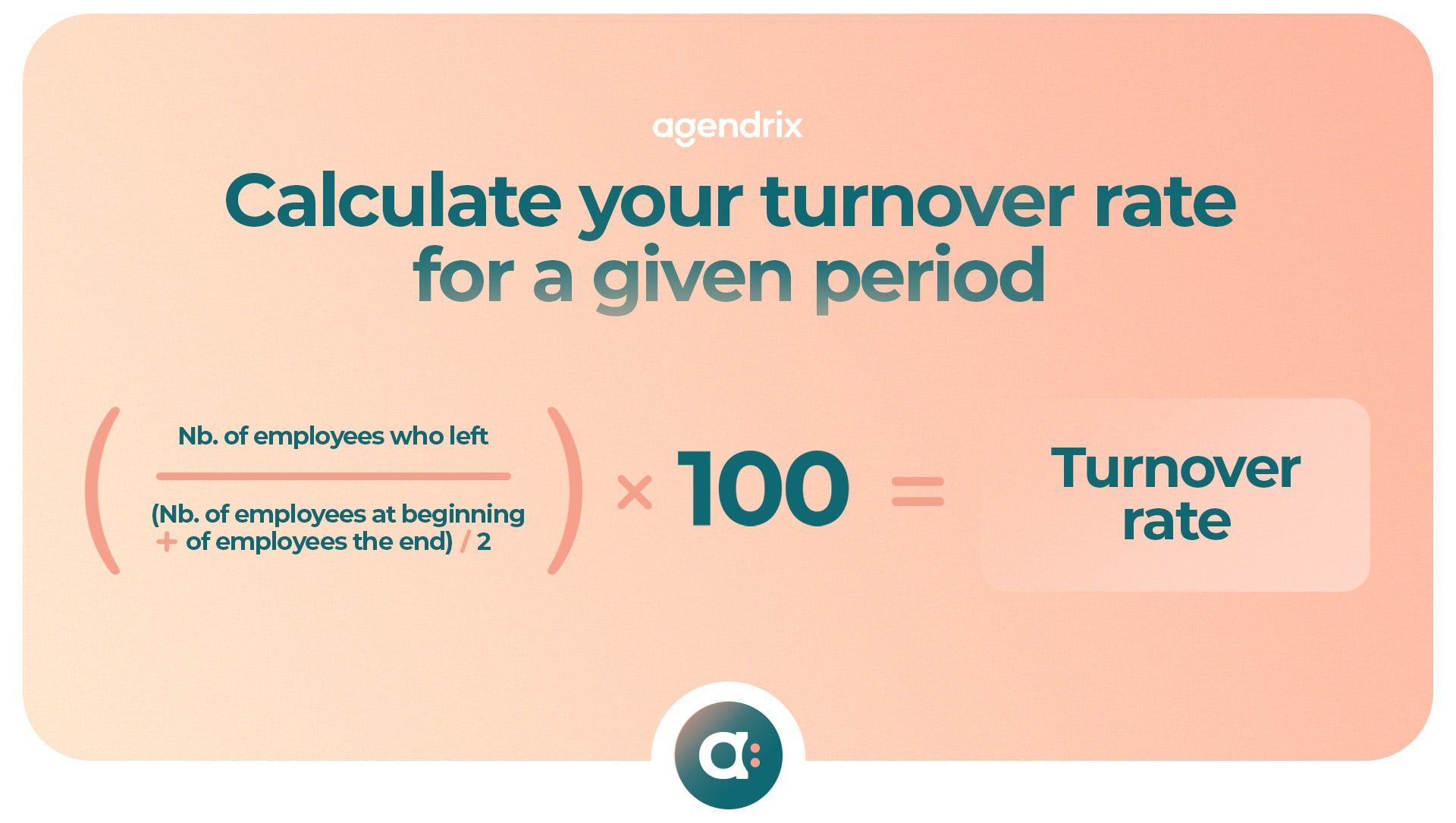Employee turnover rate, sometimes also called “staff turnover,” is a key indicator in companies’ HR management.
Employee turnover rate refers to the percentage of employees who left your business during a given period (often a calendar year).
Generally speaking, the lower your turnover rate, the healthier your organization. This being said, turnover rates must be interpreted with nuance. Looking over the results is not enough; you also need to know how to analyze them.
To help you better understand your turnover rate, this article will demystify the most commonly used terms, and explain how to calculate your own employee turnover.
If you already know that you have a high turnover rate and are looking for ways to bring it down, read this article instead: How to Improve Your Employee Retention Rate.
Calculating Your Employee Turnover Rate
A company’s employee turnover rate is normally calculated over a full year. Although there are several ways to go about the calculation, the simplest is to use the following formula:
For example, imagine that 3 employees left your company during the past year. Including these 3 employees, your company had a total of 30 employees during that period. Your turnover rate is 10%.
Now, analyze the results.
- What were the main causes of the departures?
- Is your turnover rate comparable to those of other companies in your industry? For reference, the 2021 Bureau of Labor Statistics report set the average voluntary turnover rate to 25%.
- Is one department more problematic than the others? For example, your turnover rate might be nearly zero for the cashier team, but very high for your sales department.
- Is your turnover rate higher or lower than in previous years?
Taking It Deeper
When your employees leave your business, they do so voluntarily or involuntarily.
- Voluntary departure: The employee decides to leave your company of their own free will. This can be for several reasons: they might not get along with the team, or maybe they were offered a job with a better salary, or went back to school, for example.
- Involuntary departure: The employee leaves your company, but not willingly or because of their situation outside of work. An employee can be terminated for a variety of reasons, for example failing to meet goals or expectations, violating the code of conduct, etc.
If your employees often leave voluntarily, consider whether your business might be at issue, for example because of an inadequate salary, an incomplete onboarding process, a toxic work environment, an inappropriate management style, etc. If your employees always leave because of scheduling issues, it would be a good idea to start using an employee scheduling software to reduce scheduling errors and frustrations.
Conversely, if your employees are often terminated, ask yourself if your recruitment process is effective when it comes to finding candidates that mesh with your company, for example.
A better understanding of your turnover rate will enable you to make improvements to your business. In turn, these improvements will concretely benefit your organization, for example in the form of a higher employee retention rate, greater employee motivation, improved team cohesion, etc.
Employee Turnover and Retention—What’s the Difference?
The retention rate is the opposite of the turnover rate. It is the percentage of employees who remained employed over a given period.
The higher the retention rate, the better! But watch out: Just like with the turnover rate, you also need to know how to interpret it.
If you have a respectable retention rate of 90% but the employees you lost were the most highly qualified for your business, this is not a good sign. It probably means that your organization is struggling to retain talent in the long term.
To address this situation, you can make sure to provide your employees with career development opportunities, for example.
How Much Is Your Turnover Rate Costing You?
Calculating your turnover rate with certainty can be difficult, given the many factors involved. Generally speaking, experts agree that an employee’s departure will cost about 1.5 to 3 times their annual salary.
Here are some examples of expenses incurred when an employee leaves:
- Less productive hours or weeks of work before the employee leaves;
- Additional time that other employees will have to put in to compensate for their co-worker’s departure;
- Time spent recruiting (advertising, interviewing, welcoming and onboarding the new employee);
- Number of hours required to train the new employee.
Experts also suggest several ways to calculate the cost of your turnover rate. There are even online tools to help you.
Toward Good Human Resources Management
It is obvious that, beyond purely mathematical calculations, the turnover rate is first and foremost a human indicator.
By understanding why your employees are leaving your business, you can genuinely improve many areas and learn to become a leader in employee retention.











